The pros and cons of protein (2/2)
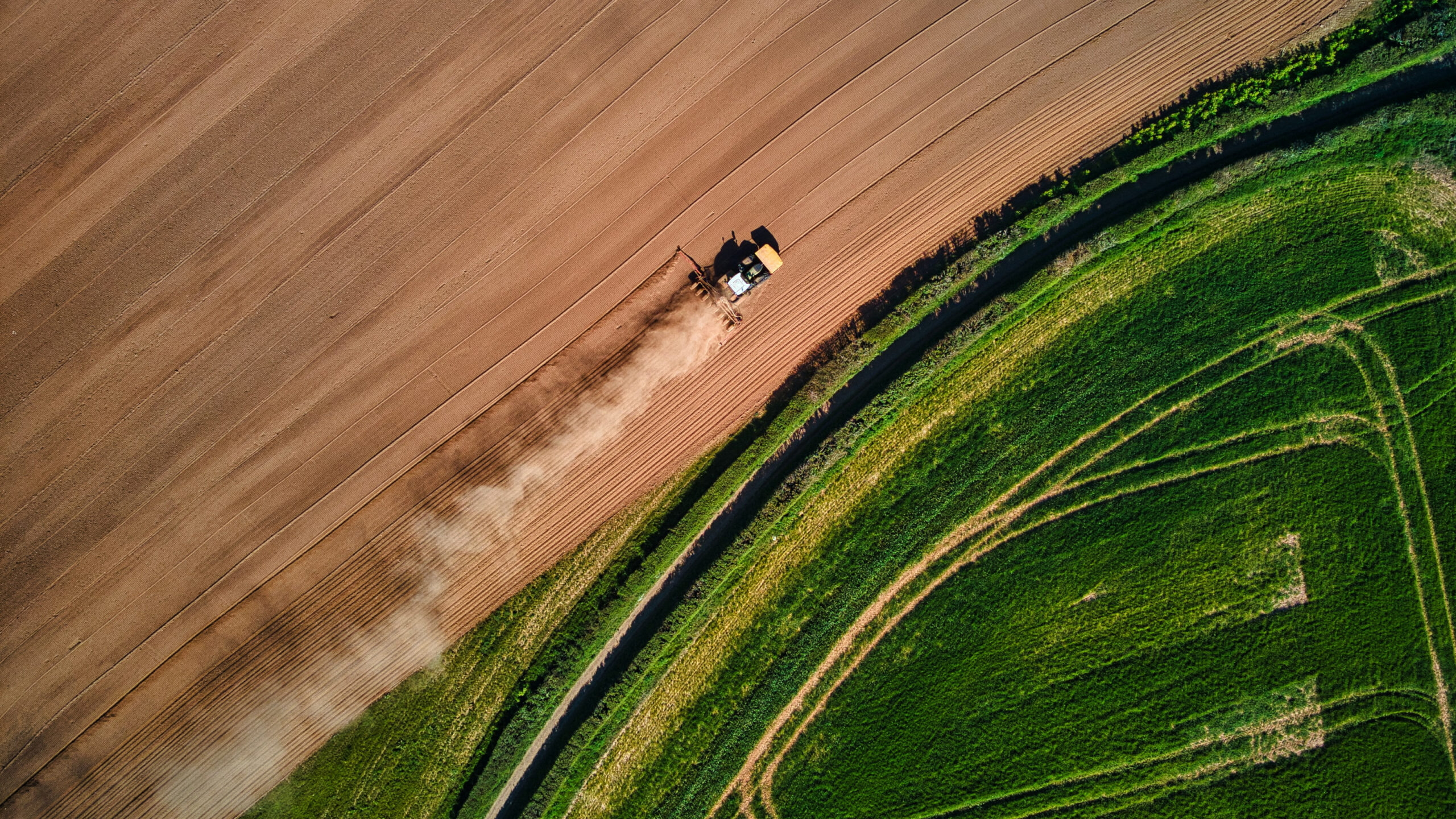
Written by:
Natasha Järviö
Researcher, University of Helsinki
“Food production is the main contributor to environmental change, such as climate change, land degradation, water scarcity and biodiversity losses.”
In our previous article, we looked at the impact protein has had on the development of life and the progress of humanity. Our protein consumption is increasing steadily around the globe and it is causing irreversible damage to the planet. We interviewed industrial ecology researcher Natasha Järviö at the University of Helsinki to hear what can be done.
Järviö specializes in life cycle assessment which is a methodology for assessing environmental impacts associated with all the stages of the life cycle of the goods and services we produce.
– “I think the first time I truly realized what our food production is causing was when I was looking at the deforestation of mangrove forests for the production of shrimp. I was zooming into this area in the Mekong Delta in Vietnam using Google Earth satellite images. It was shocking to see how over the span of ten years much of the landscape had been cleared of mangroves and there were mainly shrimp ponds left.”
In her latest study, Järviö and her team researched the environmental impact and life cycle of food production, comparing the impact of growing cattle, peas, nuts and Solein, Solar Foods’ microbial protein. The study makes the case for its significance in its first sentence: “Food production is the main contributor to environmental change, such as climate change, land degradation, water scarcity and biodiversity losses.”
We are occupying the planet
–“The most pressing issue that food production is causing is the loss of land. The loss of biodiversity. We are losing species at such an alarming rate, we don’t even know all of them.”
The clearing of land results in a lot of problems. Climate change is one, but biodiversity and desertification, erosion from unsustainable production methods and overgrazing are quite visible and a big problem for the habitability of the planet.
– ”I’m from the Netherlands, so if you think about what Dutch landscape looks like, it’s not much better than the Mekong Delta. There are no shrimp ponds but there are fields everywhere. After centuries of agricultural industrialisation there probably isn’t anything untouched left.”
Protein production is having an outsized effect on the environment. The obvious one is all the land we are clearing, from the Mekong mangroves to the Amazon rainforest. With the forests goes biodiversity. We are planting monocultures of soybeans, maize (corn), and oil palms that leave no room for all the animals, insects, plants and fungi, which firstly have a right to exist in their own right, but they can also be essential for biological reasons that we aren’t even aware of. Even single-celled organisms need a diverse environment to thrive and create rich soil. Humans don’t live in an isolated bubble.
–“What people usually don’t understand is how much land is needed to grow livestock.”
There is a massive chain of feed that is needed to grow livestock. 77 % of the land we use for agriculture is to produce livestock, mostly as animal feed. One animal needs to eat an enormous amount of plants before you can eat one kilogram of its meat. One-third of all the cereals that are grown in the world are used for feed.
–“People highly underestimate the amount of land that is occupied by food production. Documentaries will show how cows live but the space the factory farms and pastures take is only the tip of the iceberg. Soybeans are mostly not grown for tofu but animal feed.”
98 % of soybeans are fed to animals to be specific. Soy is one of the biggest crops in the world and ever more land is being cleared to grow it, especially in rainforests.
–“I’m assuming populations that are becoming more wealthy will be consuming even more animal protein, which requires more feed, which will scale the problem up again.”
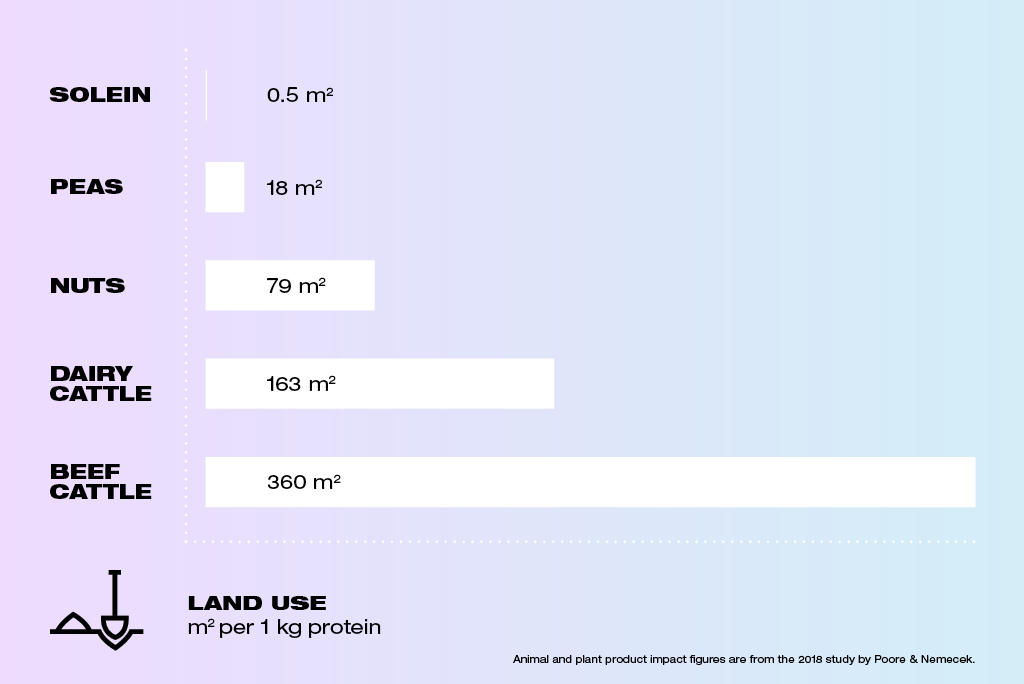
According to a recent 2018 study, cattle take up 163 m2(dairy cattle) to 360 m2 (beef cattle) per kg of protein, which is about half a basketball court. Multiply that by the around one billion cattle in the world and the limitations of the planet start to become evident.
Plants take up much less space. Peas required 18 m2 and nuts 79 m2 per kg of protein. To produce 1 kg of protein from Solein, however, took up 4 m2 with the present mix of energy sources and only 0.5 m2 with renewable electricity sources; about the amount that you are standing or sitting on right now.
Water use and water scarcity
In addition to land, growing animals also requires an immense amount of water. Not just as the animals drinking water, but the water needed to grow all the plants used to feed the animal. Waters are also polluted from runoff of the nitrogen and phosphorus-rich fertilizers spread on the fields to grow the plants and all the dung runoff from factory farms. There has been a marked rise in the eutrophication of waterways and seas with algae blooms, depletion of fish species and general deterioration and deoxygenation of oceans.
Järviö’s study calculated the water scarcity caused by protein production, which is different from pure water use.
–“Water use is just that: the water you use. Water scarcity is a method in my field that takes into account the damage that amount of water use causes to an ecosystem when it is withdrawn from it. So withdrawing one litre in Finland from a lake causes less impact than in Spain where droughts are a more serious issue and water is more scarce.”
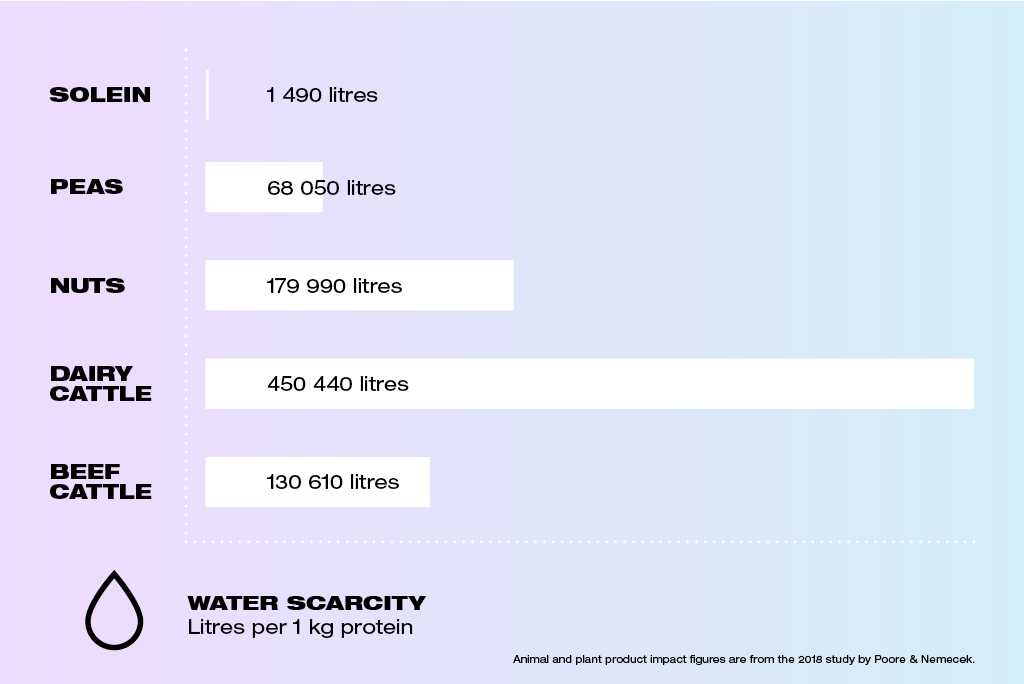
Cows are the biggest water guzzlers. Beef cattle use 130 610 litres and dairy cattle 450 440 litres or around the size of an average swimming pool for 1 kilogram of protein.
There are big differences between plants too. Peas have a much lower impact than nuts for example. Peas require 68 050 litres and nuts 179 990 litres per kg of protein. In some cases, water-thirsty plants like California almonds can have a water scarcity impact even greater than beef.
Solein uses water from the air, and electricity is used to split the water into hydrogen and oxygen, which are used to grow the microbes. Even with a traditional energy mix, Solein uses less water: 3730 litres. With renewable energy, the figure is less than half of that. 1490 litres per kg of protein – 0.3% of what is needed to grow a kg of dairy cattle.
Climate change and food production
Climate change is caused by global warming driven by human-induced emissions of greenhouse gases and the resulting large-scale shifts in weather patterns. Agriculture and especially growing animal protein is a large contributor to climate change. Some of the biggest causes of greenhouse gases are carbon dioxide released by deforestation, the gases released by burning fossil fuels to manufacture fertiliser, and the methane emitted by cattle. Converting forests to agricultural land also decreases the amount of CO2 that forests absorb. There is a huge industrialised chain of heavy machinery, manufacturing resources and logistics involved, which requires more energy and releases more emissions.
–“At the moment, unfortunately, most of the production of the proteins we eat relies on monocultures and a complex supply chain of external resources. You have to order your phosphates from somewhere and your nitrogen from somewhere else. Nitrogen requires a lot of electricity to make. And there are only about 20 years worth of phosphorus left.”
Solein is detached from the usual chains of agriculture, so its climate impact mostly comes from the electricity that is used to produce it. With a scenario where the electricity is produced with renewable energy, like hydropower, Solein’s overall greenhouse gas emissions are even smaller than peas.
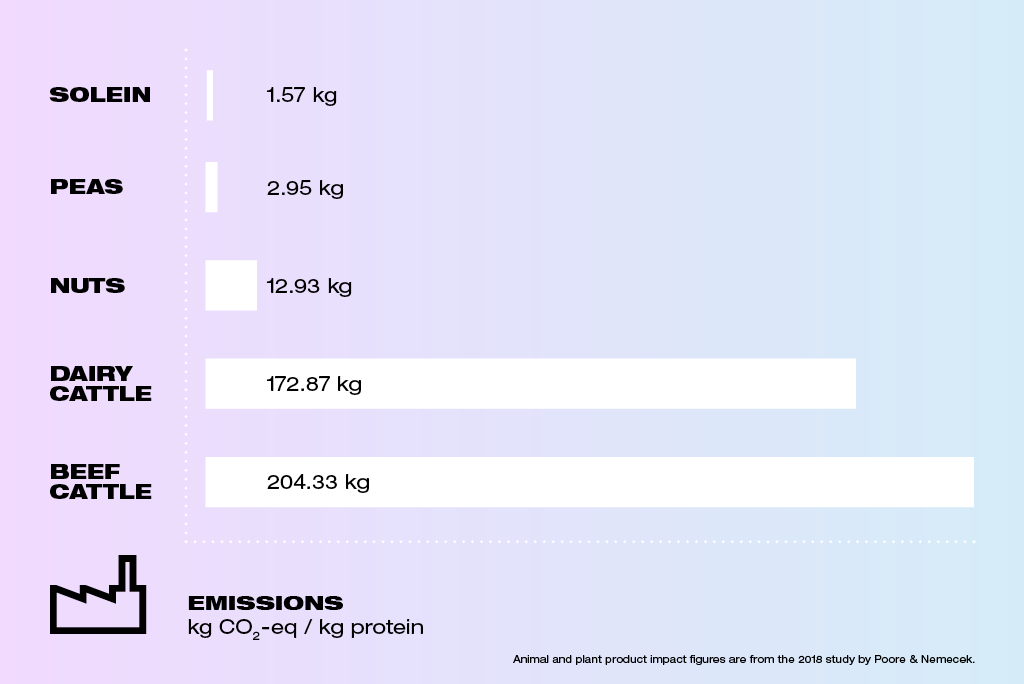
Beef produced 204.33 kg and dairy cattle 172.87 kg of CO2 per kg of protein. Peas had an impact of 2.95 kg of CO2 per kg of protein, nuts about 12.93 kg of CO2 per kg of protein. Solein produced with renewable electricity produced just 1.57 kg of CO2 per kg of protein.
Overall, depending on the type of electricity used, Solein had from 53% up to 99.7% lower environmental impacts than animal-based food protein sources.*
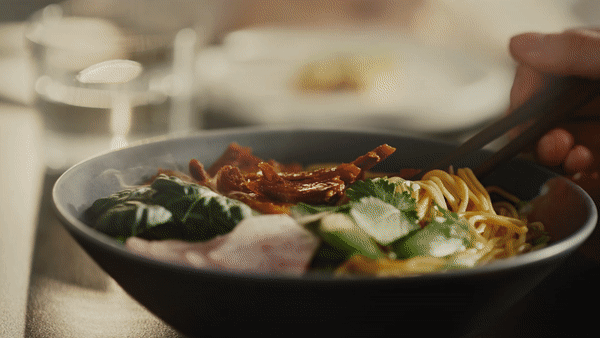
Is there a future for agriculture?
Järviö also wanted to emphasize that agriculture and even animal husbandry will continue to exist. We will just find healthier and more sustainable methods to farm and new food technology to complement our diets.
–“Agriculture doesn’t have to be all bad. You could use regenerative agricultural practices to improve the soil and retain a biodiverse production system. You can raise animals in a healthy rotation and not overgraze. You can even have a positive impact if you’ve got a circular system and you’re doing it right.”
Global steps must be taken to change the status quo of what farming means. To keep up with the demand for protein and reduce consumption of animal-based foods, which occupy land, waste water and cause climate change, the world needs a restructured food system.
Cellular agriculture technologies like Solein, which use only a fraction of the resources can be the key to this next agricultural revolution.
* In Järviö’s study, the averages used for food production are European to ensure comparability. The impacts of packaging and transportation were not included in the study due to lack of data.
Sources:
Poore & Nemecek – Reducing food’s environmental impacts through producers and consumers, 2018
Hannah Ritchie and Max Roser – Environmental impacts of food production, 2021

